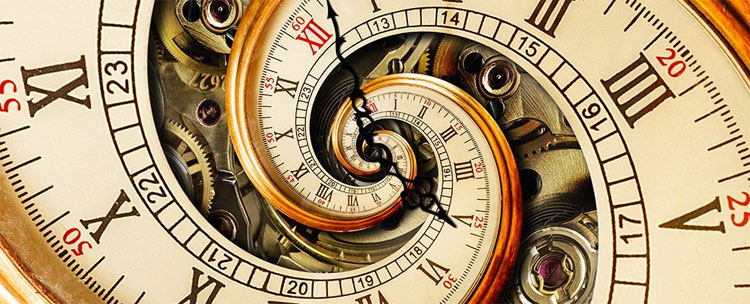Can science reverse time?
We all know that the time arrow is always on the future, but physicists still have trouble explaining why this happens? The mixture of chloroform and acetone may create a strange condition to answer this problem. Since then, scientists have actually created an environment where time can be reversed.
Research will not take us to admire dinosaurs, but it will give us an explanation: why does the universe only move in one direction? This groundbreaking experiment is carried out by an international team of physicists. They focus on a key feature that we often use to determine time - the movement of energy.
We can recognize time intuitively quite simply: we can remember the past but cannot predict the future. But when breaking this simple rule, we don't understand why the cause must happen before the results?
At an extremely small level, we can overturn the formula that describes the movements and interactions of particles and everything still happens normally. So why can't time move forward and backward?
The explanation lies in something called entropy . In a system that cuts energy - such as our universe - everything tends to go from order to chaos. This helps create large-scale systems that can explain the distribution of energy.
Under the laws of thermodynamics, you cannot place a hot object in a cold room and expect the room to become cold and the object becomes hotter. Because in nature, everything tends to become cold. Perhaps thermodynamics cannot give us a clear answer to the existence of time, but it gives scientists a new direction of research.

We can remember the past but cannot predict the future.(Photo: Shutterstock).
Many experiments have shown that, even at the quantum level, the behavior of particles still depends on the initial conditions: that is, they follow the rule of time. However, are there any limitations to this general formula?
The team looked at chloroform - this molecule consists of a carbon atom linked to a hydrogen atom and three chlorine atoms. The researchers used a strong magnetic field to line up the nuclei of carbon and hydrogen atoms. At the moment, they are in the acetone organic molecule and scientists also adjusted a property of particles called spin.
This process allows the team to "listen" to the behavior of particles when their nuclei are heated up slowly with a nuclear resonator. According to the time principle, when a nucleus heats up, it will transmit random movements to colder particles until both have the same temperature. This change can be identified through their respective energy states.
Under normal conditions, this is exactly what happened. But the researchers found an exceptionally attractive exception when interrelated particles were interrelated. This makes the particles far apart but can still be interconnected - it is like a miniature version of the 'quantum entanglement' phenomenon .
Particle correlation creates significant differences in how energy is shared between particles. Hot hydrogen particles are even hotter than before, while carbon molecules attached to them become colder. In other words, this study shows that time has been reversed at a very small part of the universe.
"We observed that the heat flow automatically moves from cold to hot ," the team wrote, "Although the experiment was only done on a very small scale - it would not give us a capacitor." Powerful electricity can help us return to the 60s, but it shows: arrows of time are not always geared forward.
The experiment also provides promising details about the place where quantum mechanics and thermodynamics have crossover - this is a problem that many physicists are still trying to find. To some extent, the results show how strange the movement of temperature is when applied to the rules of quantum physics. Maybe we are going to have some interesting technical applications related to this issue.
To turn experiments from such small systems into a study of the size of a universe is a very remote thing. But at least, the new experiment has filled a small gap in the eternal question: is time always going in one direction?
Research has been published on arXiv.
- Observe the extremely rare 'reverse evolution' lizard species in the natural world for the first time
- Special 'reverse' filter: Only large objects are allowed to pass
- American scientists happen to reverse the aging process
- British scientists reverse the aging process of human cells
- Why does Mars look like it is moving backwards?
- Biological evolution
- The team of scientists who make 'reverse solar cells', in the dark, also generates electricity
- The experiment proves that traveling back in time is possible
- Reverse effects of chemotherapy and radiation therapy
- Why do we often go against other people's opinions?
- Announcing method to reverse leukemia
- A reverse opening - new innovation for a 3000 year old invention
 'Fine laughs' - Scary and painful torture in ancient times
'Fine laughs' - Scary and painful torture in ancient times The sequence of numbers 142857 of the Egyptian pyramids is known as the strangest number in the world - Why?
The sequence of numbers 142857 of the Egyptian pyramids is known as the strangest number in the world - Why? Miracle behind the world's largest stone Buddha statue
Miracle behind the world's largest stone Buddha statue What is alum?
What is alum?